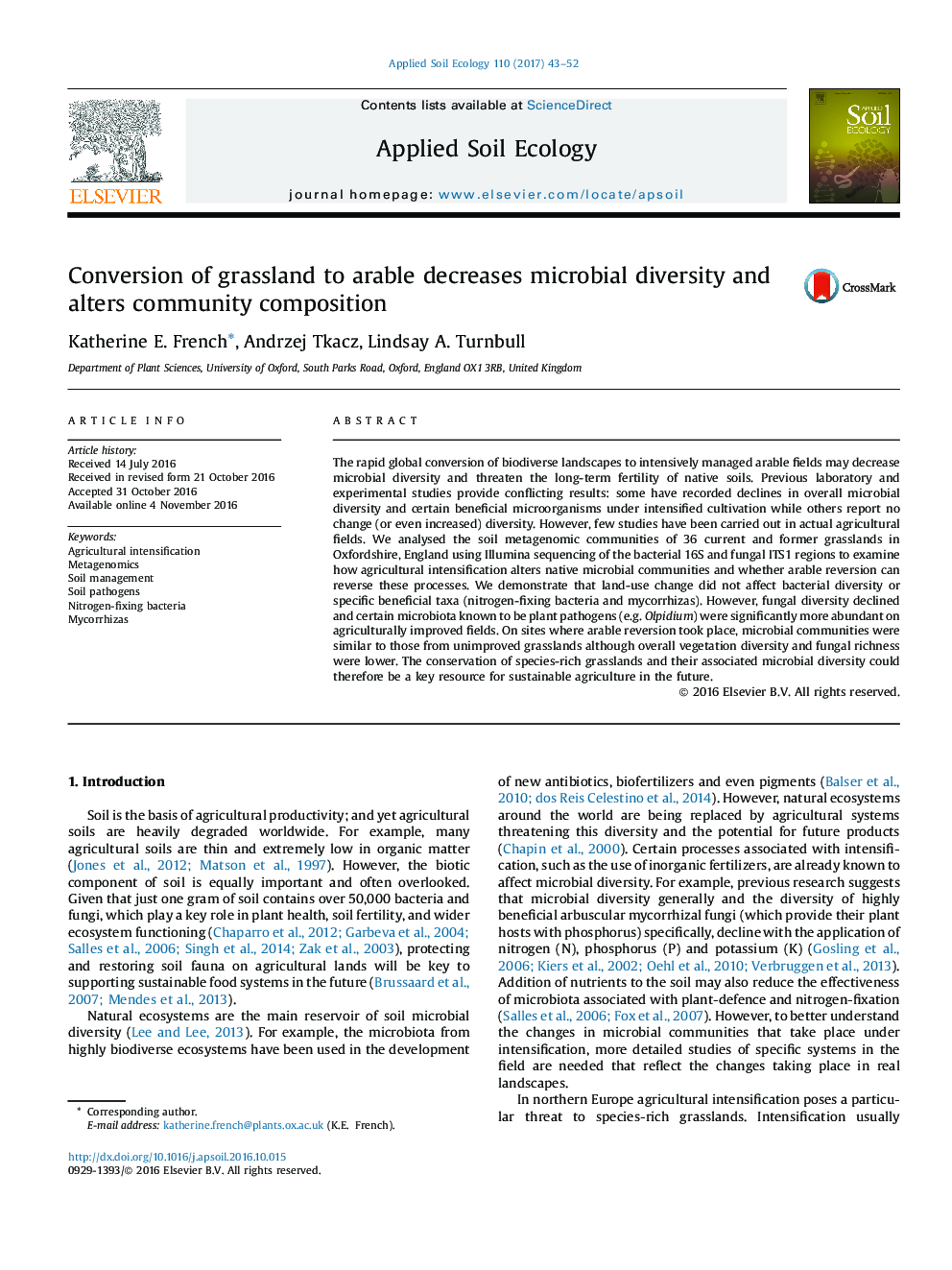| کد مقاله | کد نشریه | سال انتشار | مقاله انگلیسی | نسخه تمام متن |
|---|---|---|---|---|
| 5742771 | 1617773 | 2017 | 10 صفحه PDF | دانلود رایگان |
- Agricultural intensification did not affect bacterial diversity & beneficial microbiota.
- Fungal diversity declined with decreased vegetation diversity.
- Potentially pathogenic taxa were more abundant on agriculturally improved fields.
- Species-rich grasslands contained unique microbial communities.
- Inoculating agricultural soils with grassland soil could naturally boost soil fertility.
The rapid global conversion of biodiverse landscapes to intensively managed arable fields may decrease microbial diversity and threaten the long-term fertility of native soils. Previous laboratory and experimental studies provide conflicting results: some have recorded declines in overall microbial diversity and certain beneficial microorganisms under intensified cultivation while others report no change (or even increased) diversity. However, few studies have been carried out in actual agricultural fields. We analysed the soil metagenomic communities of 36 current and former grasslands in Oxfordshire, England using Illumina sequencing of the bacterial 16S and fungal ITS1 regions to examine how agricultural intensification alters native microbial communities and whether arable reversion can reverse these processes. We demonstrate that land-use change did not affect bacterial diversity or specific beneficial taxa (nitrogen-fixing bacteria and mycorrhizas). However, fungal diversity declined and certain microbiota known to be plant pathogens (e.g. Olpidium) were significantly more abundant on agriculturally improved fields. On sites where arable reversion took place, microbial communities were similar to those from unimproved grasslands although overall vegetation diversity and fungal richness were lower. The conservation of species-rich grasslands and their associated microbial diversity could therefore be a key resource for sustainable agriculture in the future.
Journal: Applied Soil Ecology - Volume 110, February 2017, Pages 43-52
